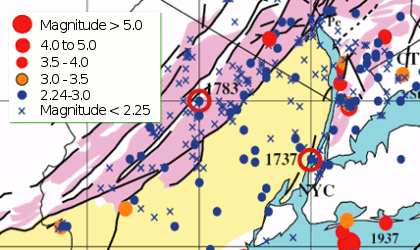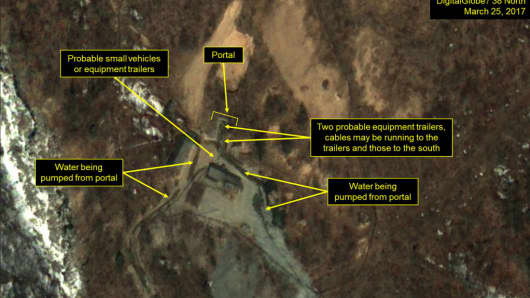BAGHDAD, Iraq - On the edge of the almost exclusively Sunni city of Fallujah, at one of the many army checkpoints on the road from Baghdad, drivers cannot help noticing a larger-than-life-size portrait of Iraq’s Prime Minister Haider al-Abadi.
Is this picture of a Shia who heads a Shia-majority coalition government meant to warn Sunnis that Iraq has changed and they must learn to live in a country which they have lost the right to rule?
Appearances are deceptive. The Abadi portrait is an exception. Posters and public pictures of the prime minister are remarkably rare, in contrast to the practice when his predecessor Nouri al-Maliki held the job until three years ago, let alone when Saddam Hussein ran his family dictatorship.
More than that, most Iraqis, including Sunnis, view Abadi as a more acceptable ruler than Maliki was. He is seen as balanced, modest and pragmatic - a fitting symbol of the normalisation Baghdad is gradually undergoing, 14 years after the overthrow of Saddam.
A crucial chunk of Mosul is still in the hands of Islamic State militants. The third of the country which IS once held remains largely in ruins although people are gradually drifting home.
The chronically low oil price is causing widespread economic problems. Corruption is rife. But at least in the capital city violence and bombs, despite a succession of deadly IS attacks at the start of this year, are less frequent dangers than they used to be and a reasonable life is possible again.
There are fewer checkpoints than six years ago, when this journalist last visited, and drivers get less angry with the queuing, accepting it as necessary. People take their children to ice cream cafes in the evenings or stroll around the shops. Iraqis in the diaspora are taking their teenage children on vacations to the "homeland" to see where their parents used to live.
“The Abadi government doesn’t have strong teeth to bite people. The prime minister has two qualities: he’s against violence and he’s not hostile to any group,” said Abdul Latif al-Humayem, a respected Sunni sheikh who served in Saddam Hussein’s administration and now heads a large government-supported charity, the Iraqi Sunni Waqf (Endowment).
“Abadi is Dawa to the bone,” a foreign diplomat told MEE, referring to the Islamic party that the prime minister and his predecessor and rival, Maliki, have spent most of their lives in.
“But Abadi is emerging as a national figure and expressing opinions which differ from traditional Dawa.”
Even some Maliki loyalists acknowledge Abadi’s skill at keeping all sides in play, on foreign as well as domestic Iraqi issues.
“He wants balance in regional affairs,” said Saad al-Muttalibi, who sits on the Baghdad city council as a member of Maliki’s State of Law coalition.
The looming defeat of IS in Mosul has given a new weight to Abadi’s foreign policy options. What will the role of Iran and the United States be in Iraq’s post-IS future? How will the internal dynamics of Sunni and Shia rivalries play out?
General James Mattis, the new US defence secretary and a longtime hawk on Iran, visited Baghdad in February. He was soon followed by Saudi Arabia’s foreign minister Adel al-Jubeir, making the first trip by a senior Saudi official since 1990.
According to Iraqi analysts, the aim was to try to pull Iraq into an anti-Iranian posture now that Tehran’s help against IS is no longer needed. The pressure on Abadi will continue at this week’s Arab League summit in Amman.
Ankara forum
He pointed to the way Iraq’s Sunni neighbours were intervening in internal Iraqi politics. Turkey invited several senior Iraqi Sunni leaders to Ankara earlier this month for a conference which seemed designed to create a new Sunni political alliance and perhaps lead to demands for federal autonomy for western Iraq where most Sunnis live.
Along with Turkey, the Saudi, Qatari, UAE and Jordanian governments are believed to have financed the conference and those who attended. They included Vice-President Osama al-Nujaifi, former deputy prime minister Saleh al-Mutlaq, former finance minister Rafi al-Issawi and a controversial multi-millionaire businessman, Khamis al-Khanjar, who openly advocates making Iraq a federation with separate Sunni, Shia and Kurdish entities.
There is a general consensus among Iraq’s political class that IS was able initially to win support in Sunni areas because many people in western Iraq felt marginalised.
But looking to a federation as a solution is considered too radical by many Sunnis who vigorously opposed the Ankara forum. Some disliked the involvement of foreign powers, seeing it as a potential repetition of the proxy wars which have helped to tear Syria apart.
Mahmoud Mashhadani, who served as speaker of parliament from 2006 to 2008, saw the Ankara meeting as a device to undermine a document called “the unified vision of the Sunni Arabs on the historic settlement initiative” which was drawn up under his leadership in a group called the Front for National Decisions.
It proposes changes in the constitution to authorise more devolution of power to governorates without going as far as splitting Iraq into regions.
The document is being given to the United Nations office in Iraq which has invited all interested politicians to give their views on Iraq post-IS, including election law reform, human rights and economic development.
“If Iraq is to become a state with three components it will increase the power struggle”, Mashhadani told MEE.
“We are all asking why security collapsed and Daesh [IS] took over. The answer is the weakness of the Iraqi state [since Saddam], its sectarian division, and the delay in building a country with a national vision.”
'Wrong place, wrong time, wrong people'
“The Ankara conference was wrong in the timing, the place, and the people who were invited. They’re under foreign control. We reject it. It gives the Shia an excuse to turn to Iran, and the Kurds to turn to Israel and other countries. It undermines the national reconciliation which we want,” added Mashhadani.
The Ankara forum invited Salim al-Jabouri, the current speaker of Parliament, to chair the project as it moves forward.
“I accepted on certain conditions which have been agreed. The aim must not be to divide Iraq, so ‘internal’ Sunnis must be brought in as well as those who live abroad. The movement must also co-operate with the Abadi government,” he told MEE.
In spite of these changes, the project still disturbs some Sunni politicians because of the heavy foreign influence. Several of the project’s leaders have been invited to Amman to meet foreign ministers after the Arab League summit.
The issue of Iran’s influence in Iraq is the key issue but it is widely exaggerated, according to Saad al-Muttalibi, the Maliki supporter.
“In fact it is fading,” he told MEE. “No Iraqi of importance turned up at the Iranian embassy on their national day in February.”
He claimed that those who voted for Maliki in the last elections felt betrayed because Iran switched its support to Abadi.
Iraq has six border crossings with Iran but none with Saudi Arabia that is open to trade. Almost no Saudi companies invest in Iraq whereas Iran and Iraq invest in each other’s countries and Basra gets its electricity from Iran.
“The Iranians are playing a long game and a waiting game,” said Sajad Jiyad, the director of the Al Bayan Centre for Planning and Studies.
"Their investment in defeating IS will pay off. They got their hands dirty in Iraq. They put their skins on the line. They lost three or four generals plus a dozen senior officers,” Jiyad said.
The Iranians saw the seriousness of the threat which IS posed. This explained why, in spite of their long-standing differences with the United States, the Iranians have not attacked US forces in Iraq since the Americans returned in 2014.
This contrasted with Iranian policy of a decade ago when Iran sent weapons to militias who were fighting US forces, he noted.
US airpower may be decisive in the final stages of the battle against IS but Iran’s early contribution is not forgotten.
No analyst in Baghdad expects Abadi to turn against Iran or join an anti-Iranian alliance of Sunni politicians and Sunni states, however much pressure the Trump administration or the Saudis decide to apply. Balance remains the name of the prime minister’s game.









